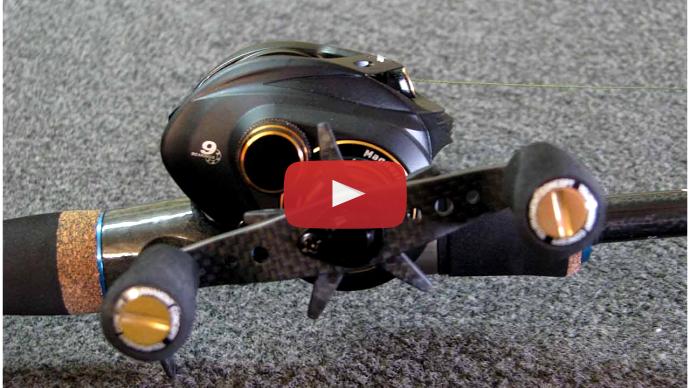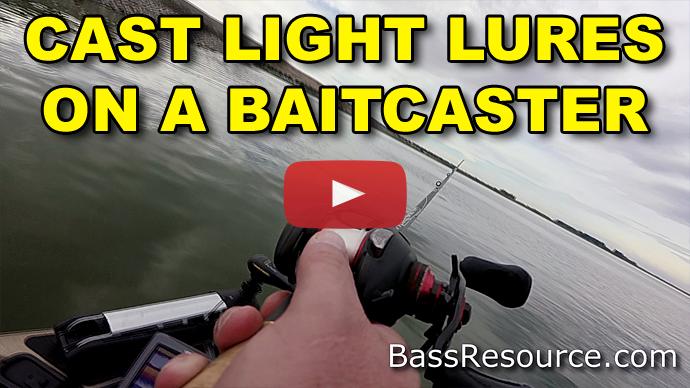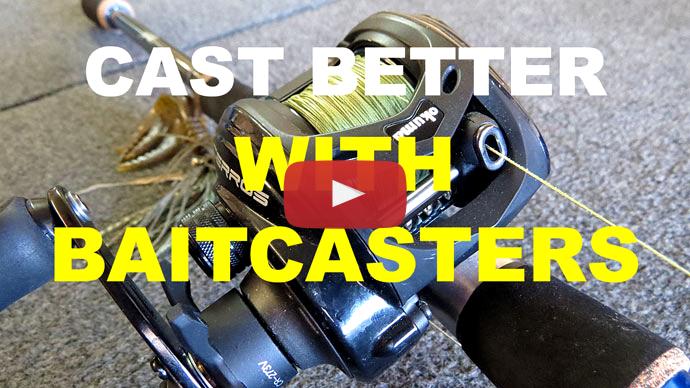Hey folks, Glenn May here with BassResource.com, and today I wanna talk to you about a certain kinda cast that's gonna get you more fish. I hope you're sitting up and listening, especially if you're a back-seater or if you fish from the bank, you're really gonna like this cast, it's gonna help you get to spots that you normally can't access with other casts. It's the backhand cast.
What I'm talking about here is you just...it's kind of a combination between a backhanded golf swing and a swing at bat. And what it does, it lets you get into spots that you couldn't get with a regular overhand cast or with just a sidearm cast. Things such as when the trees are hanging over bushes, or hanging over right close to the water, there might be a branch or something in the way you couldn't get to. With the backhand, you can get it right in that pocket, maybe a little notch or protrusion from a dock.
Listen, when I was a back-seater, I caught so many fish that the front-seater missed because they couldn't get to those spots that otherwise, that I could, with a bankhand cast, especially when it comes to docks. A lotta times the back-seater...or the front-seater will get the front side of the docks but he won't get the back side very well. With this cast, you can do it.
Alls it is, is when you're doing it, what you wanna do is let go of the thumb bar sooner than you normally would. That's the first thing about it. If you let go like you would an overhand or a regular sidearm cast, you're gonna fling that bait right back, way over to the right. So don't do that. Release a little bit sooner, more like about the noon o' clock or even 11:00 position than you would a little bit later on a normal cast.
Also, when it comes to casting, you wanna keep that bait real low to the water, and this is a real key about this cast. With a low trajectory, you can get it to enter the water nice and quiet. And that's key. If you're...with an overhand cast, that lure comes crashing down, you might as well just be throwing rocks at the fish. You're gonna spook 'em. You want a nice quiet entry. And with this cast, you can keep it low to the water and then thumb it just before it hits the water and lift up on the rod tip just a little bit, and you're gonna get a nice, quiet, soft entry. You're gonna get a lot of bites. A lot of 'em will happen right when it hits the water when you do it right, when you do it that way.
Now if you're bank fishermen, if you're fishing from the shore, this opens up a whole new level of fishing for you. Typically what you do is you sidearm it and can get along that one stretch of bank to your left, and you can parallel that lure right along the bank, but it's hard to do it on the right because you can't sidearm it that way. With this cast you can.
You have to be a little cognizant here because you could get the rod tip too low and hit the ground or if you're hitting, you might hit the water, so what you wanna do is get right up to the water. This works great if you have like a steep bank especially, because you can...you're up a little bit higher than the water level. You can actually get up a little bit and get yourself up above the water. If there's a rock, or you're fishing off a dock, you're fishing of some kinda ledge, look for something that's gonna get you a little bit above the water so you can get that rod tip down and don't...and not risk hit anything.
You can get it right up over to the right-hand side, get it real close to the bank and parallel the bank, a parallel structure. Or if there's branches, trees, bushes in the way of trying to get to a certain target, this cast will enable you to get that lure right where you need to. It opens up a whole lot more possibilities and targets for you, especially if you're fishing from the shore.
This cast takes a lotta practice. It's hard to practice at home because you gotta get the rod tip down. You gotta keep it low. When you're doing it at home, it's...you're likely to get the rod tip right in the grass, if you're doing it in the lawn for example. So stand up on a bucket, or get up on a chair or something, you know, a little bit higher up so you can practice it at home. But get that rod tip down closer to the water. That's the key to this thing.
Now, you gonna guys...probably some of you guys are gonna ask me about the rod I have. This is a spinnerbait rod. This is a custom rod from Batson Enterprises, just so you guys know. It's an Eternity 2 RainShadow blank. That's why It's blue. The thing is, it's a six foot nine rod, not a longer rod. Some of you guys use seven foot or longer rods for spinnerbaiting. I like a shorter rod because, specifically, because of this cast. If you notice, the style of fishing that I'm doing here, it's close. I'm not bombing the lure way out there, I'm doing pinpoint accurate casting. And with a shorter rod, it enables you to be a lot more accurate and keep that lure way low to the water without the rod tip scraping the surface of the water.
Anyway, guys, it's gonna take a lotta practice when you do it. Don't get frustrated when you first try it because it takes a while to get that timing down with your thumb, both when you release it and when you get it...when it enters the water, to hit...to slow that spool down just right so you get that nice, soft entry. But with time and with practice, you're gonna catch a lot more fish with it, especially if you're fishing with a partner who doesn't know how to cast this way.
I hope those tips help. For more tips and tricks like this, and for the answers for all your questions about bass fishing, visit BassResource.com.



